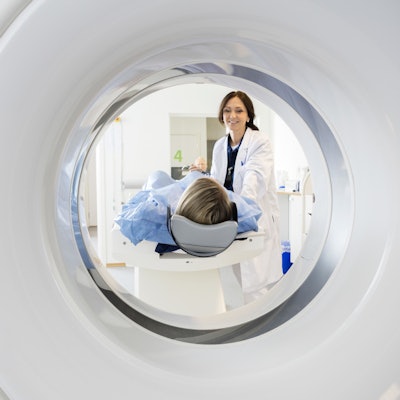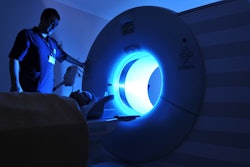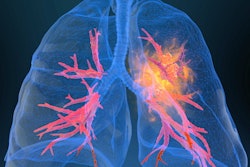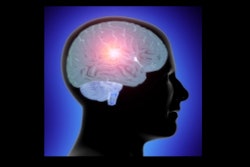
Quantitative CT is increasingly being used in applications beyond diagnosing and tracking osteoporosis, according to a presentation on September 8 at the International Society of Computed Tomography (ISCT) 2023 meeting in San Diego.
"The terminology of 'quantitative CT' has greatly broadened in recent years to include measurement of many other properties on CT images, including physiologic processes that occur over time," said presenter Andrew Smith, MD, PhD, of University of Alabama at Birmingham.
Interpretation of radiologic images, including CT, has largely been based on subjective observations -- which are prone to interobserver variability and can be inaccurate, Smith told AuntMinnie.com.
"The field of radiology is moving more toward objective measures, which improves accuracy, precision, and interobserver agreement," he said.
Smith offered session attendees an overview of how data obtained from quantitative CT imaging can contribute to patient care:
- AI body composition analysis as the result of opportunistic screening. Identifying cardiomegaly, emphysema, or interstitial lung disease from CT scans patients undergo for other indications.
- Natural language processing or large language model quantification from CT reports. For example, managing abdominal aortic aneurysm and quantifying adrenal nodules.
- Functional CT. Using the modality to study dynamic physiologic processes in the body such as stroke perfusion (quickly identifying ischemia, differentiating core from penumbra, assessing collateral flow); cardiac strain (assessing myocardial mass, wall thickness, and wall motion); and coronary CT angiography fractional flow reserve (determining the hemodynamic significance of coronary artery stenosis, assessing patient risk of disease, and reducing the use of invasive coronary angiography).
- Assessing disease severity. Evaluating ischemic stroke, staging chronic liver disease (including the severity of cirrhosis and identifying portal hypertension), and staging pulmonary fibrosis.
- AI lesion detection and quantification. Quantifying lung nodules (incidental, those identified on lung cancer screening, and metastatic disease).
- AI quantification of advanced cancer tumor burden. Producing fully automated, standardized reports quickly, with higher accuracy, interobserver agreement, and the elimination of data transfer errors.
Because objective measurements are better than subjective, quantitative CT improves patient care, Smith said.
"CT imaging is becoming more quantitative due to advances in image processing, including new techniques [such as] photon-counting CT that were not previously possible," he concluded. "In addition, image-processing techniques such as AI have advanced and allowed us to measure things that could not have previously been measured."




















